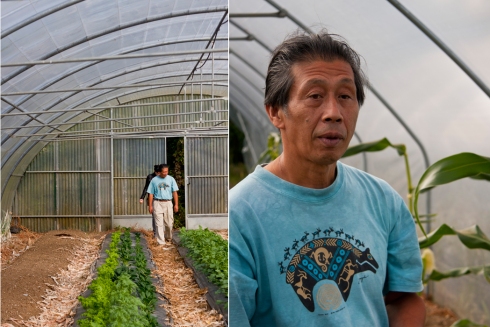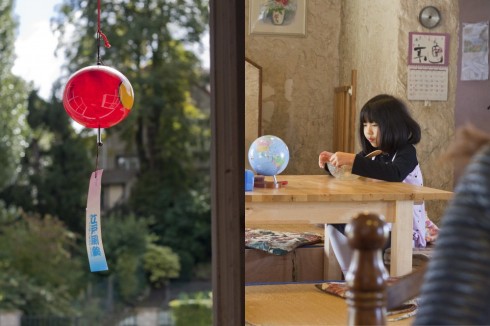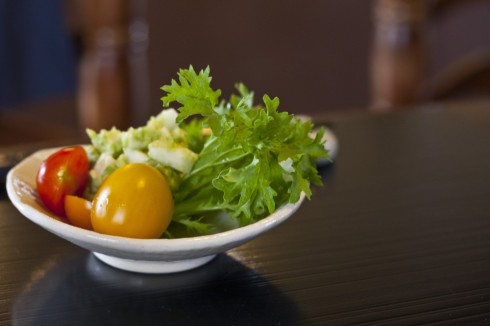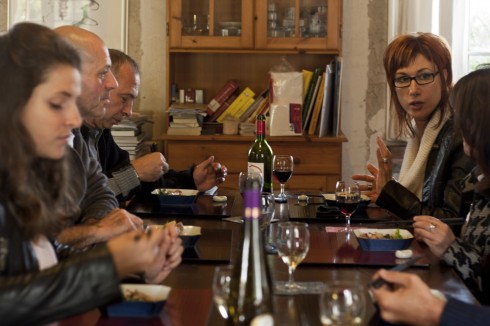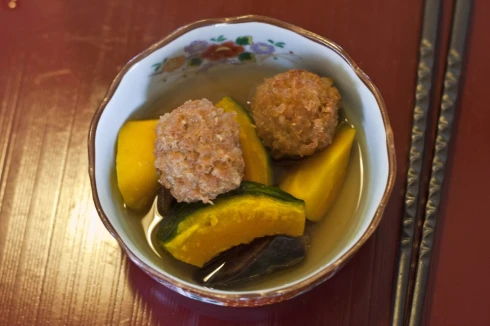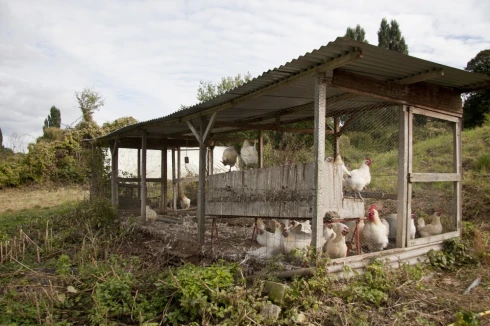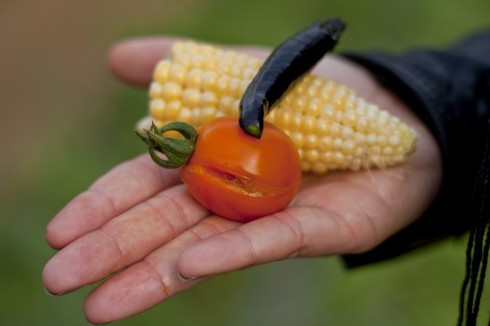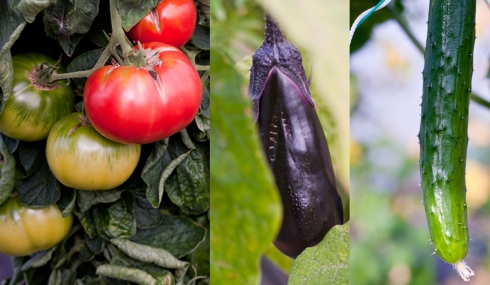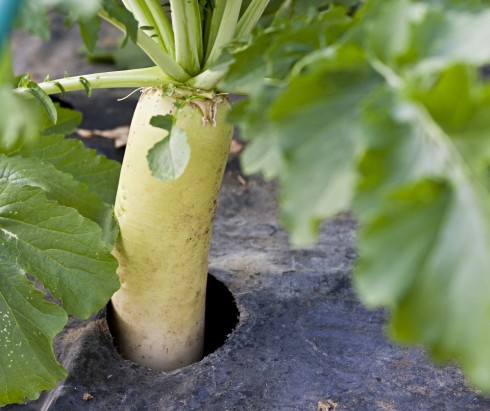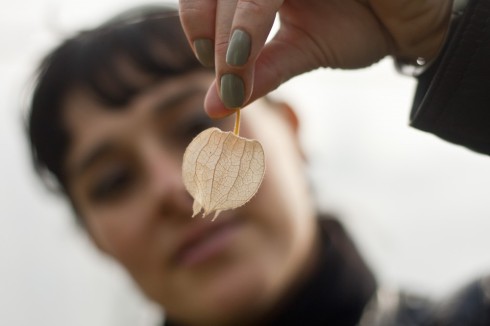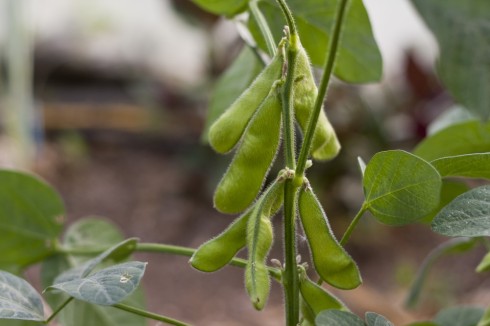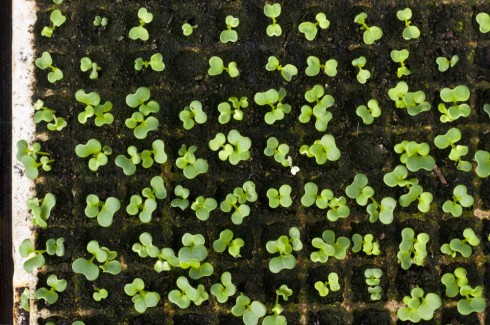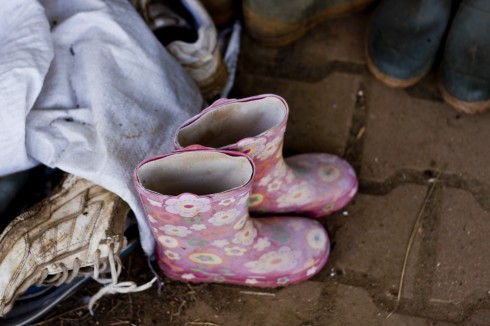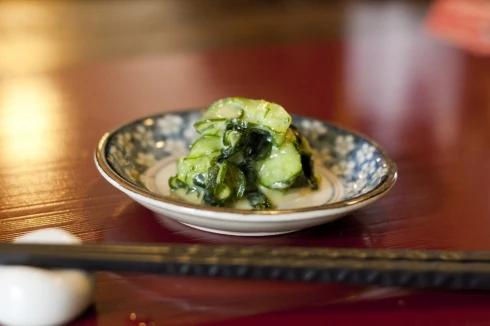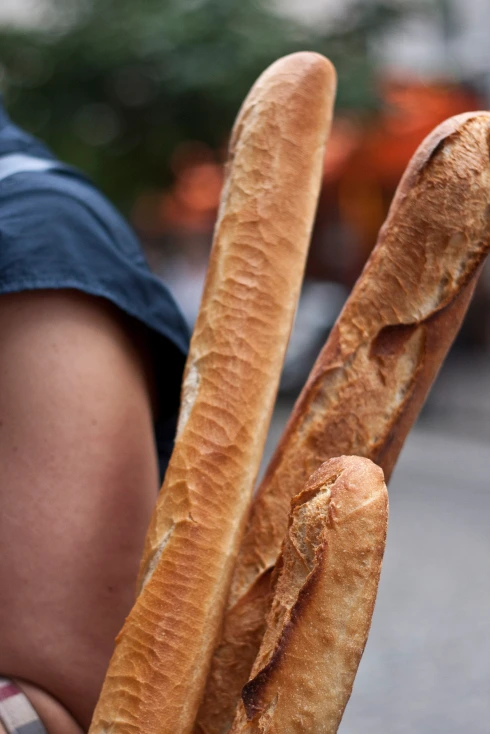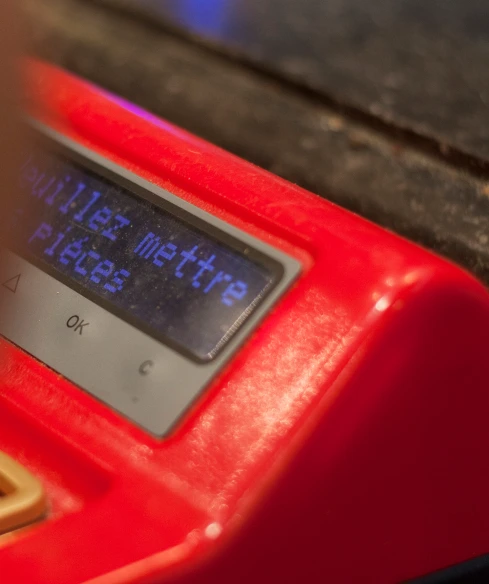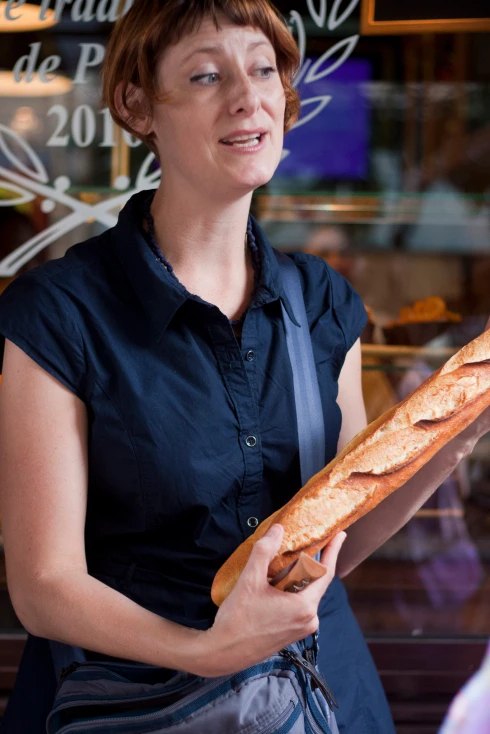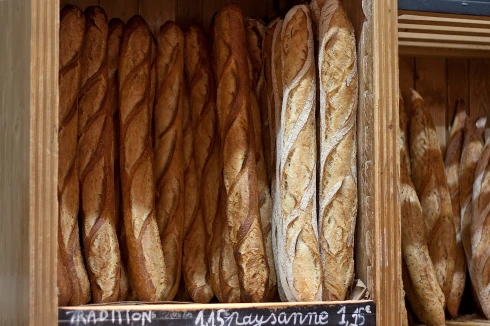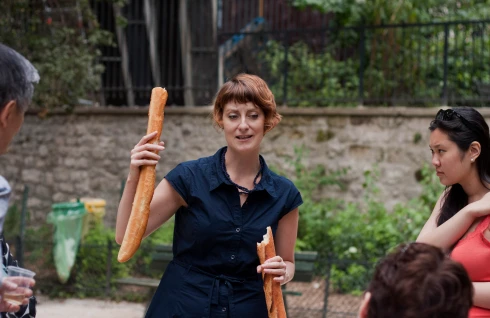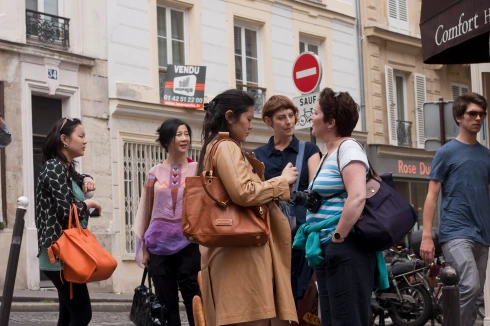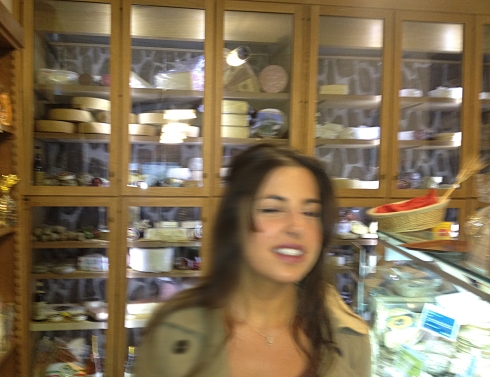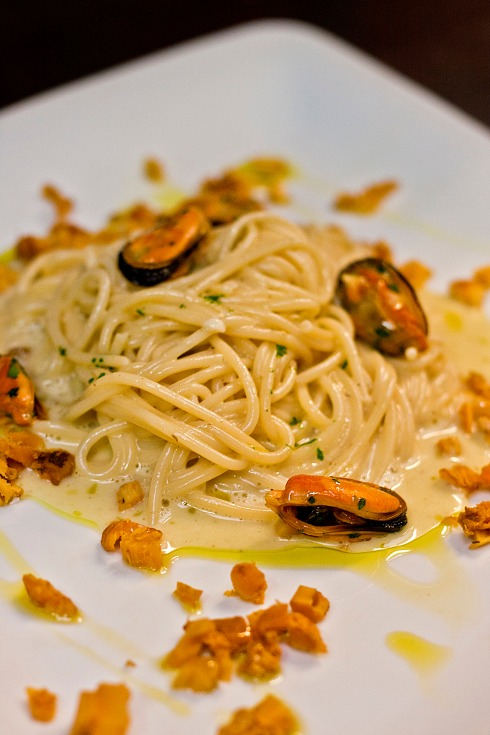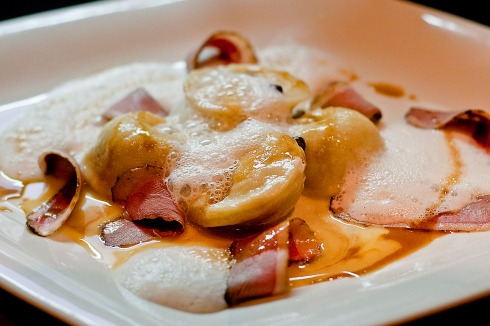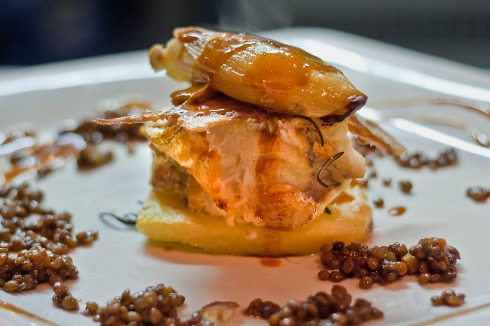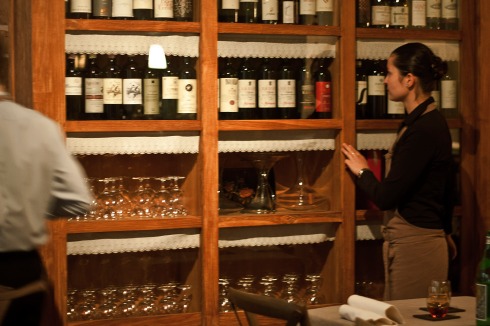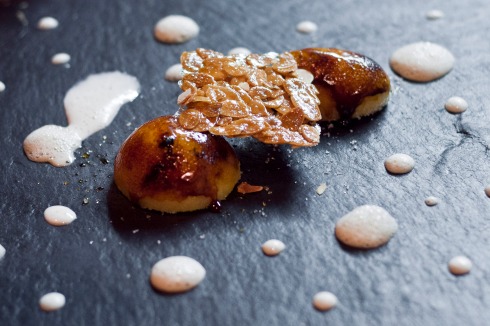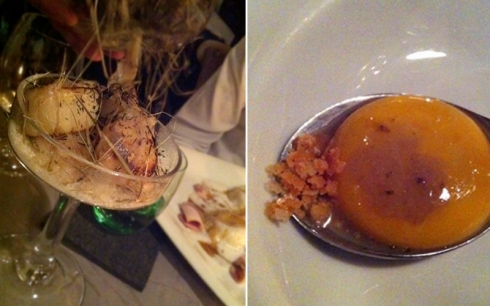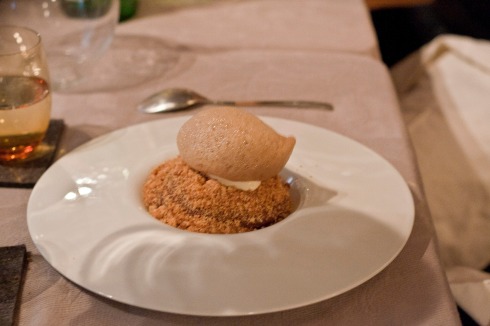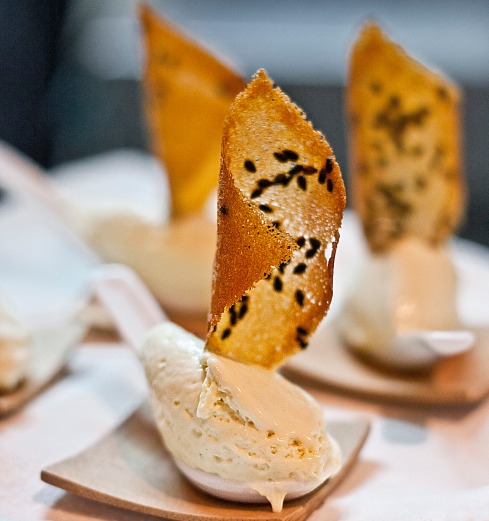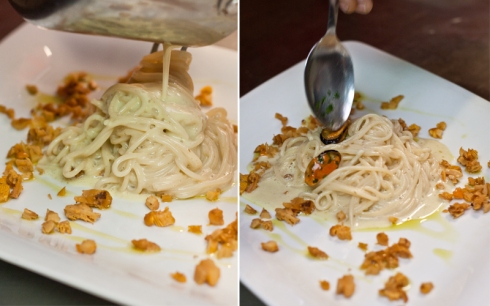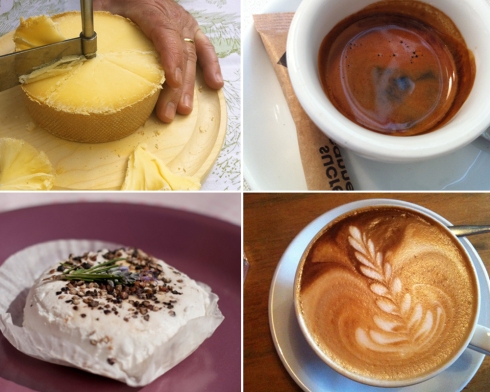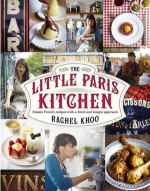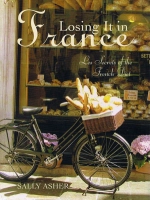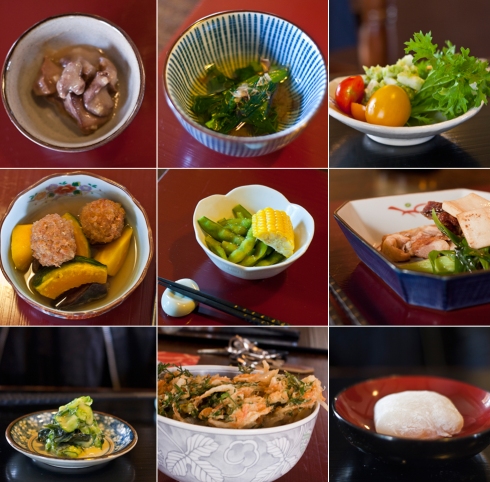
The degustation menu: Clockwise from top left: Chicken hearts and liver in miso; Bonito Dashi with Kometsuna Japanese greens; Wasabi leaf, kabu and avocado, cherry tomato salad; Black carrot, Hokkaido Pumpkin and chicken dumplings in dashi broth; Steamed edamame and sweet corn; Fried Chicken and Okara tofu with Japanese leeks; Pickled cucumber, wakame and miso salad; Udon with fried carrot leaves and shrimp; Apricot Mochi with green tea
Asafumi Yamashita is not your average French vegetable grower. Firstly, he’s not French – he’s Japanese; and his clients are not your average grocers, retailers or restaurateurs. Yamashita can count his current clients on less than two hands – three-starred hands, in fact. Yamashita is the select vegetable supplier to top chefs such as Pierre Gagnaire, Sebastien Bras, Sylvain Sendra, Pascal Bardot (l’Astrance), Eric Briffard (George V) and Anne Sophie Pic (Maison Pic), but don’t quote me on the currency of which of these are on the list at this moment. What’s even more interesting, however, is Yamashita’s personal story behind how this came to be.
I first met Yamashita when I was on the panel at Haute Cuisine Paris. Yamashita gave a demonstration and tasting of his exotic Japanese vegetables along with chef Sylvain Sendra from Restaurant Itinéraires. It was that day when I first tasted the sweetest, juiciest raw corn that had ever passed my lips, and the intriguing texture and flavour of his trademark vegetable, the Kabu – something I describe as in-between a daikon, zucchini and a green apple. More importantly, chatting with Yamashita that day was when I discovered his personal story.
Yamashita first came to Paris 24 years ago. At the time he was a bonsai artist and made a modest living from selling his bonsai trees. One fateful day, all but one or two of his Bonsai trees were stolen from his property. Left without his valuable assets for the bonsai business, he turned to his other hobby, for which he had natural gift – growing vegetables. With all but a green thumb, a few packets of dried seeds brought from Japan, and a handful of existing plants, he slowly built up his vegetable garden and started supplying local Japanese restaurants in Paris and surrounds with hard-to-find Japanese varieties. Eventually, his niche supply of top quality, seasonal Japanese fruits and vegetables caught the attention of the country’s best chefs, and now, 17 years later Yamashita has gained somewhat celebrity vegetable grower status amongst the ranks of France’s greatest chefs.
So it was with great curiosity and anticipation when I finally went for “La table d’hôte de Naomi et Asafumi Yamashita” experience at his farm in Chapet after scoring the last reservation of the season thanks to a last minute cancellation (the waiting list can be up to 2 months in advance).
Yamashita and his wife offer a traditional Japanese degustation lunch or dinner nine months of the year on their homestead property in Chapet, 40 kms West of Paris. The food served is sourced almost exclusively from their own farm, so it’s as authentic, fresh and local as you can get. Yamashita’s farm is not certified organic, nor does he think all that highly of the concept. He makes all efforts to avoid pesticides and chemicals but is very upfront about the challenges and realities of growing quality small-scale produce to meet his client’s demands on consistent supply and quality.
Yamashita is a modest, simple, yet switched-on, charismatic and passionate character. He personally served the ten guests at our lunch table each course, explaining in detail the produce and ingredients used. Luckily for me, I had brought along my friend Phoebe, who just happened to live in Japan for 12 years, so with her fluent Japanese we got even more out of the experience, including a translation from Japanese to English of one of Yamashita’s recipes (below).
Surprisingly, most of the other guests at our table had never before eaten food of this kind – real, home-style Japanese cooking, I mean. In reality, I shouldn’t be surprised about this. The majority of Japanese restaurants in Paris are actually under Chinese ownership, and they offer the standard sushi, sashimi teriyaki menu you see everywhere. Of course there is authentic Japanese to be found in Paris, but it’s rather hard to come by. The French sure do French cuisine well, but I have to admit, they have a long way to go on offerings of ethnic and Asian cuisine. So when a table of self-confessed French foodies– most of them from Paris and surrounds admitted to never eating wakame, dashi or tofu before, we can understand why.
The food is not fancy, it is super fresh, modest and designed to make the produce itself the star – presented and served simply with a thoughtful progression of flavour and complexity throughout the courses. I personally was totally stuffed by the fifth course, and had not even eaten managed to get through those in entirety. The chicken liver and heart dish we started with was not something I could stomach, and by the time the udon arrived, I was ready to lie down and sleep in the greenhouse next to the kabu. Everyone else at our table had no problems polishing off the entire 10 courses however… I’m forever impressed by how much French people can eat.
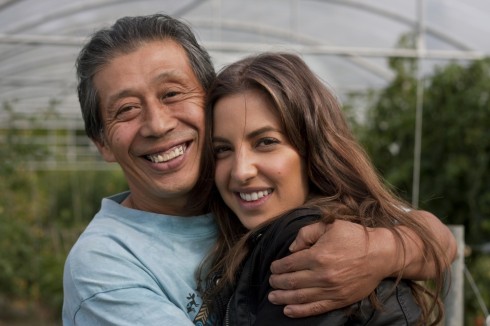
Wow… wasn’t expecting that one! Yamashita’s all affection. Must be something about those wasabi leaves…
My favourite dish was actually the simplest – a gorgeous, small side dish of cucumber wakame miso pickles. Thank you to Yamashita and his wife Naomi for generously sharing the recipe below.
How to have the Yamashita communal dining experience:
You can visit “le Kolo” communal table for lunch or dinner on weekends only, outside of the winter months. The price per head is 40 Euros for lunch, 50 Euros for dinner, plus wine.
Come prepared with a big appetite, an open mind, expandable pants, and preferably in a car. For the more adventurous types, Yamashita offers the chance to try raw sashimi chicken at your meal… but you have to “pre-order” it two weeks in advance. Enough said.
Address: Chemin des Trois Poiriers, 78130 Chapet (Yvelines) FRANCE
Phone for bookings: +33 1 30 91 98 75
Nearest transport: By train: Gare des Clairières de Verneuil (from Gare Saint-Lazare, take 31 minute train MALA in the direction of GARE DE MANTES LA JOLIE, €6) then walk 15 minutes through the Bois de Verneuil to reach the farm.
Recipe: Yamashita’s Pickled Miso Cucumbers
Ingredients:
1 egg yolk
2 tbsp dried wakame
4 tbsp mild white miso
2 tbsp rice vinegar
1 tbsp sugar
1 tsp Japanese mustard
6 baby cucumbers
Coarse Sea salt
Directions:
Rehydrate dried wakame in a bowl of warm water and drain well.
Shave cucumbers with skin on, into long thin strips, preferably using a mandolin. Sprinkle sea salt generously over the cucumbers and allow to “sweat” for approximately 10 mins. Rinse the cucumbers to remove excess salt, squeeze out excess water and then pat dry with paper towels. In a small bowl, mix the miso, egg yolk, vinegar, sugar and mustard until dissolved and well combined. Combine wakame and cucumber, then pour over sauce and mix in the dressing.

